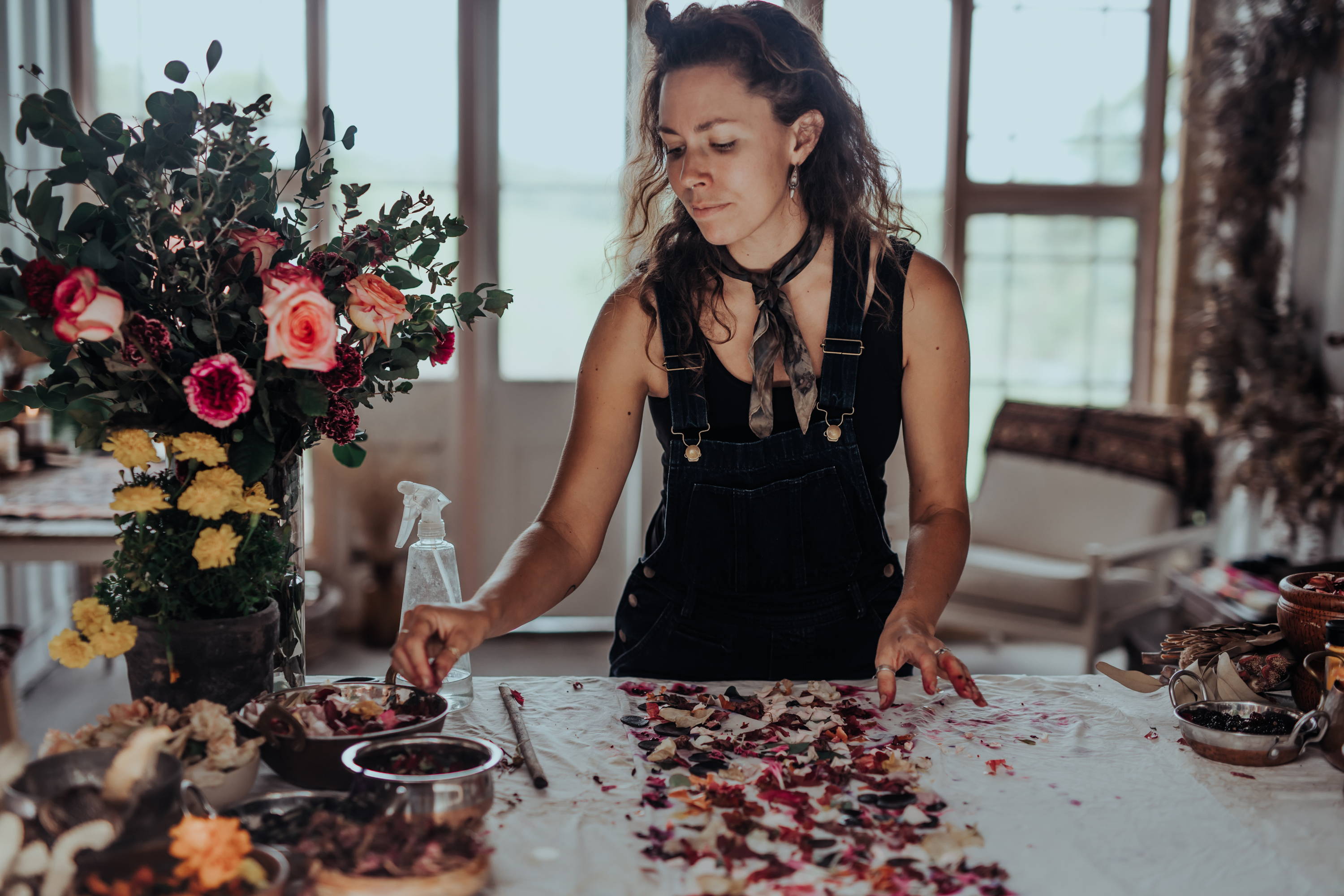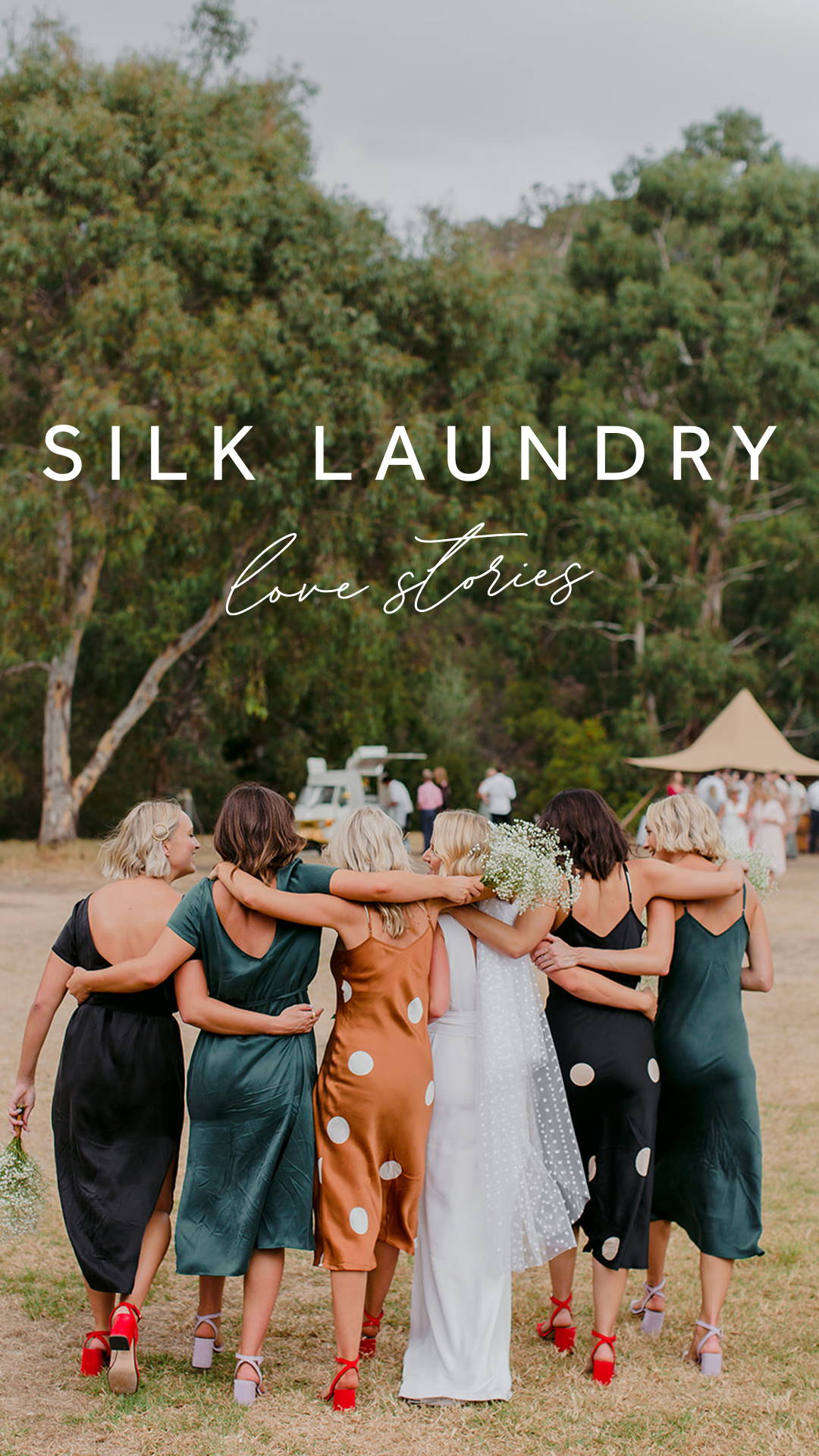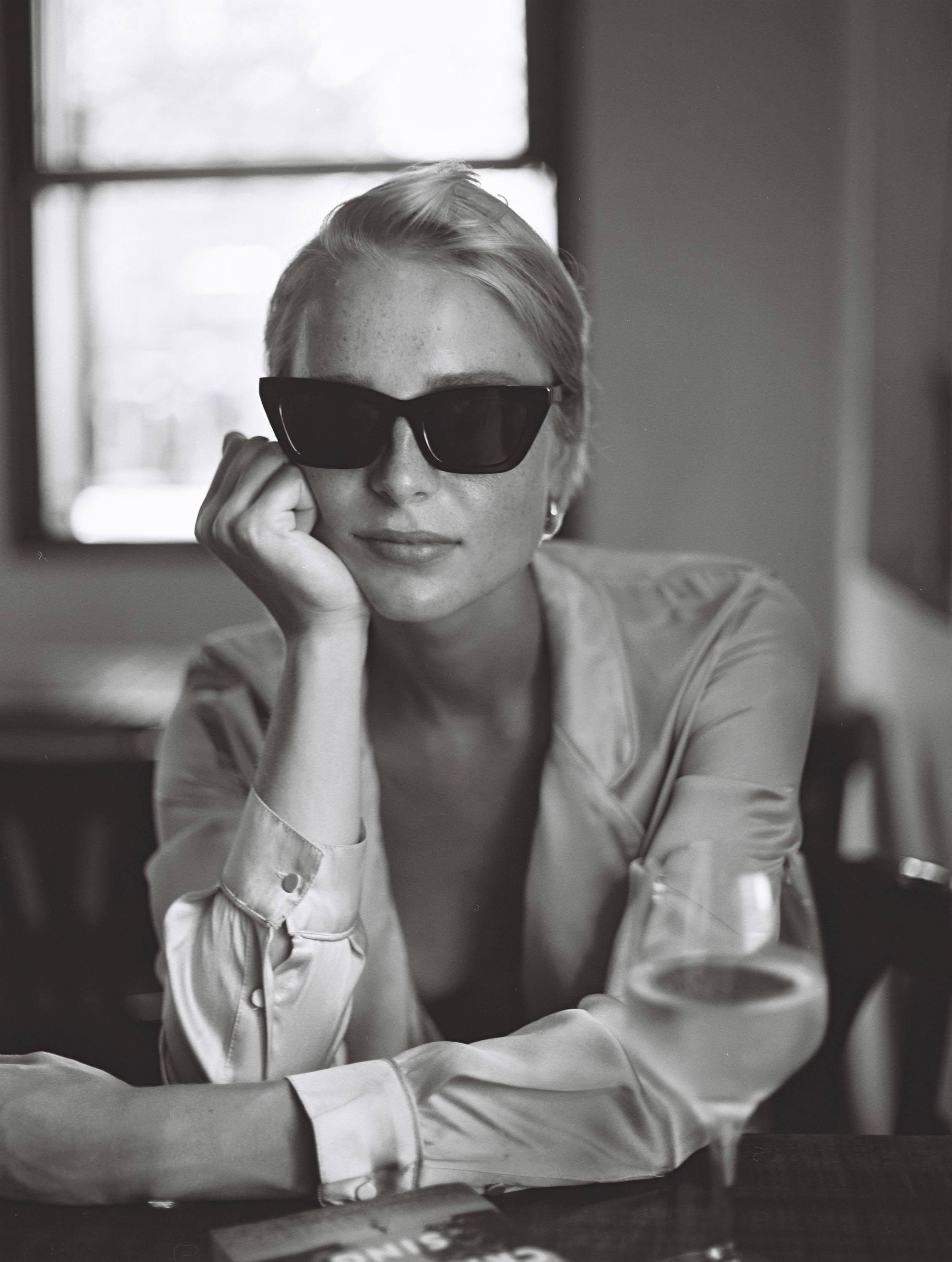We had the beautiful opportunity to speak to Abi Fincham, the founder and creator of Lunarc Studio, to find out what she’s been up to and where the last year has taken her.

In Conversation with Abi Fincham
In Conversation with Abi Fincham
Firstly, we’d like to congratulate you on releasing your debut collection of botanically dyed silk robes and adornments in November 2019! What was the biggest learning opportunity you came across while moving your works into a large collection?
Thank you. It was incredibly humbling to see the dyeing techniques I have cultivated over the past few years translated onto wearable pieces. To go through the entire process from design through to production whilst maintaining the intention of a low impact garment was so rewarding. The biggest learning throughout this experience was patience and surrender. No matter how organised and analytical you are there’s just some elements that you can’t control, especially when you have to rely on the energy of others to bring your vision to life. However if you surrender and acknowledge that everything is playing out exactly as it’s meant to then it allows creative solutions to flow forth with ease.
In which Australian season do you find yourself most inspired?
Oh that’s a hard one as I love every season for different reasons however I would have to choose Spring. Everything starts stirring and unveiling after a period of hibernation and the new blossoming energy is so inspiring. It’s when you reap the rewards of all the seeds you have sewn throughout Autumn and Winter. It’s when you savour the sun kissing your skin before it becomes too harsh and you shed your layers both literally and metaphorically. It’s the season that captures the essence of rebirth so poetically.
What was the first medium you worked with as an artist, and how did that lead you to botanicals and experimental dyeing?
I’ve experimented with many mediums over the years in an artistic sense however my longest love affair has been the medium of clothing and adornments. I see personal style as a form of art. Every day we have an opportunity to express ourselves and display our mood and internal experience through how we dress. I believe that clothing is a form of visual communication. Where and how we source our clothing is a form of expression and also a political act. I believe that art exists to evoke feelings and encourage controversial and stimulating conversation.
I discovered natural dyeing whilst I was in Laos back in 2014. It wasn’t until I moved back to Australia in 2016 that I really dove into full exploration and experimentation and it’s been the most transformative journey of reconnection to both nature and myself.
There is a lot of magic that happens when we start to use food waste in transforming ways, what is the most underused food-waste item for natural dyeing that you love to use?
My favourite food waste material would have to be the humble onion skin and in particular red onion skins. Most people interact with them on a daily basis so they are so accessible. From a scientific perspective onion skins are super high in tannins which makes for a resilient dye and when you add iron water they can create the most amazing khaki greens which is my favourite hue.
We know you spent a bit of your time in London working in the fashion and art industries before launching Lunarc Studio–what was the biggest lesson that came from your time in the UK?
My biggest lesson from living and working in London was to always honour your individuality and to celebrate your own creative essence. I allowed myself to be swept up in how I ‘should’ look, act and create as I desired so badly to be acknowledged within the industry. However by abandoning my true authenticity and playing the game I experienced first hand how disconnected you can become. I came up against so many blocks especially towards the end of my time there as I was neglecting my intuition and forcing what I now know wasn’t in alignment with my purpose.
Pure creativity and expression flows when you truly tap into yourself, slow down and sit in silence long enough to listen to your inner voice and allow it to float to the surface.
What are you reading at the moment?
Untamed by Glennon Doyle and The Untethered Soul by Michael Singer.
On your Instagram you speak of being a Garment Guardian, can you tell us a little bit about this and what current garment brings you the most power and joy?
The concept of Garment Guardian is to cultivate a reciprocal energy with every item of clothing you own. To pledge your respect and protection to every garment by washing it with care, mending it if it becomes broken and committing to consciously moving it on with intention when you no longer desire to have it as part of your wardrobe. I’m currently working on a project to empower individuals to become Garment Guardians and to build a more intimate relationship with their second skin.
Who are you most grateful for right now?
Right now I am most grateful to be living in such an incredible part of the world here in northern New South Wales. It’s absolute paradise. My community is connected and creative and there’s an ever increasing entrepreneurial energy which is constantly inspiring.
As I work directly with nature it’s so important for me to be constantly surrounded by its beauty and evolution. To interact with the elements on a daily basis keeps me grounded and I have such an abundance of dye materials right on my doorstep.
We’ve seen you work with silk and linen along with discarded textiles by distressing and altering to give them new life. What material or texture have you found the most difficult to work with, and which is your favourite?
I absolutely adore collecting and creating with old, worn textiles and clothing. I always imagine the stories that are embedded into the fibres, who wore the garment before me? What did they do? Why did they decide to pass the garment on and who was involved in its initial creation? Old garments are survivors, filled with soul and character. They remind me to embody responsibility, to ensure I continue to honour and care for them throughout the rest of their existence. When I moved back to Australia 4 years ago I made a vow to never purchase synthetic fibres again. Currently I work mostly with silk as it feels so incredible against my skin, it has amazing properties and as its a protein fibre it takes dyes so beautifully. As much as I love silk satin the downside is that it can be quite challenging to sew. Yet another lesson in patience.
I’m also exploring the wonder of hemp. It’s such a magical fibre and I’m looking forward to seeing its prevalence expand throughout the industry in the near future.
You also incorporate minerals, like iron, into your works. What exactly does iron do and what is the magic behind that?
Iron is my ally when it comes to natural dyeing. Not only is it an amazing mordant (colour fixative) it also mutes, darkens and transforms the pigment into my dream palette of greys, greens and black.
I create my own iron water by soaking rusty cast iron in a solution of vinegar and water to suspend the iron molecule into the liquid. It can then be used in many different techniques throughout my dyeing process.
I also have a strange admiration for old rusty metal objects. There’s something about the texture and colours that I find really endearing.
Do you have a favourite Australian native?
Visually, I love the Banksia. Especially when they are dried as they are covered in little beak like formations. However, I work with Eucalyptus constantly throughout my practice and I never get tired of the frosted tones and leathery texture of the leaves, the incredible scent it exudes and the beautiful dark, muted tones created by a Eucalyptus and iron brew.
We think that reducing waste, and recycling/reusing wherever possible, is an accessible practice we can do everyday for Mother Earth. Do you have any tips for home-dyers that are just starting their journey with natural dyes?
Trial and discover. I did so much research before I started natural dyeing however the real lessons started once I dove in and started experimenting. Botanical dyeing is becoming more accessible now and there’s so many tutorials online. Try extraction or bundle dyeing and breathe new life into an old or stained garment that you no longer wear.
My personal ethos is to use materials that are within my immediate environment rather than buying exotic pigments from ovetrseas. Yes, it can be more limited however there’s something quite powerful about embracing creative constraints, it often leads to the most transformative ideas.
The world of natural dyeing is infinite. I would recommend starting with one dye material and experiencing all the variations before moving onto the next otherwise it can become slightly overwhelming.
Be sure to practice safely, mindfully and responsibly. Just because it’s natural doesn’t guarantee it can’t be harmful if handled incorrectly.
We’ve seen you appear at Woodford with your bundle-dying classes, and we’re about to see you in-store with us to do a workshop. What do you love most about creating a community and teaching others about the magic of botanical dyeing?
To be honest I somewhat stumbled into teaching. It’s not something I ever thought I would do however it’s been such a beautiful journey. I share an introduction to the world of botanical dyeing, giving people an insight into how we can co-create with nature which I believe is ultimately an invitation to connect more deeply with ourselves. Watching a group of strangers bond and engage with each other whilst making a beautiful mess really fills my heart. This craft has a magical way of awakening child-like qualities and truly encourages self expression.
I often teach people that haven’t engaged creatively in a long time. It’s so inspiring to support them in reigniting a part of themselves that has been laying dormant within them. I always strive to create a sensory experience to activate every one of our senses and to truly indulge in the incredible beauty that’s available to us. I believe I will be a lifelong student of this craft. Creating with nature is infinite and ever evolving.




